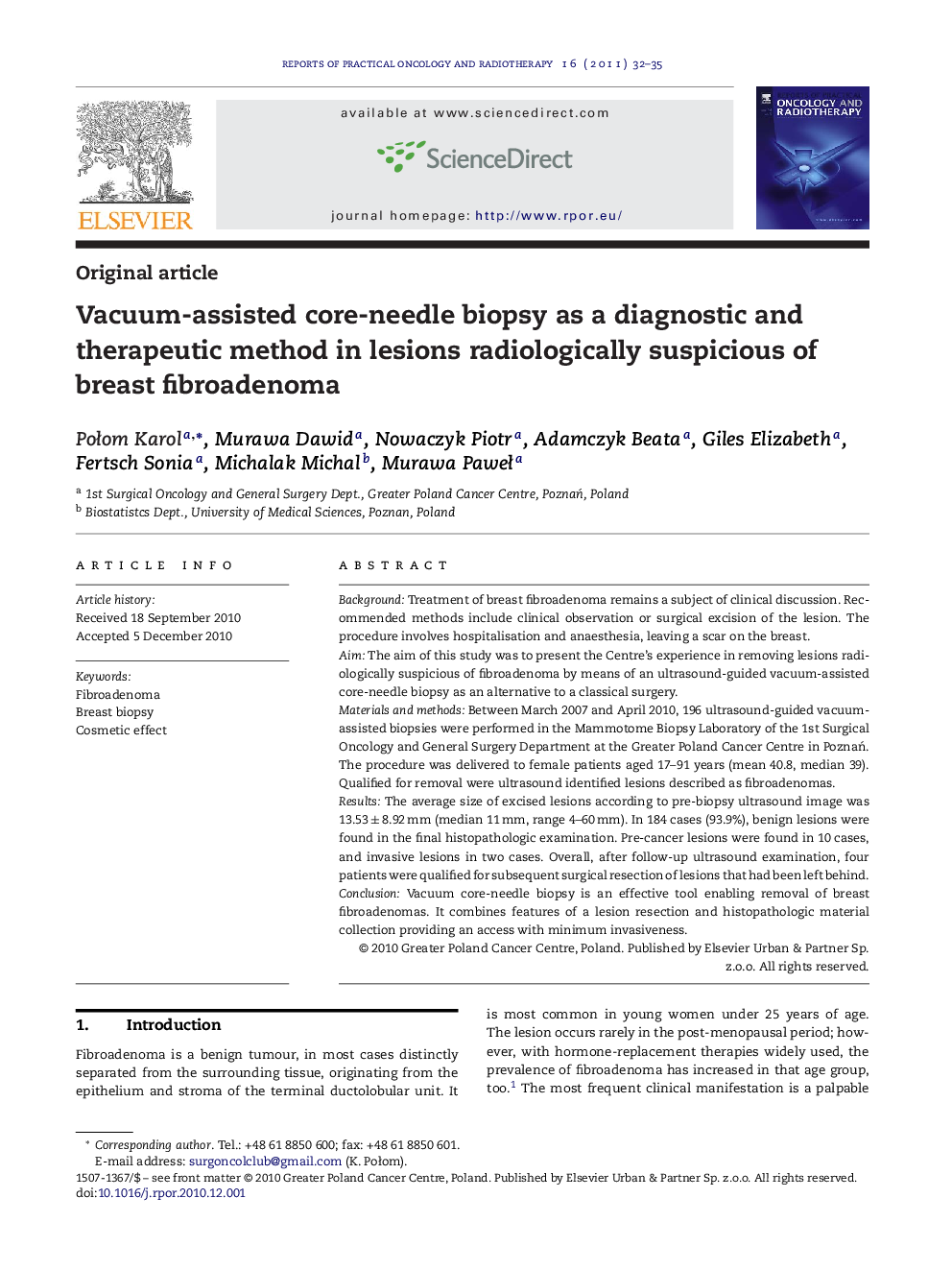| Article ID | Journal | Published Year | Pages | File Type |
|---|---|---|---|---|
| 1857134 | Reports of Practical Oncology & Radiotherapy | 2011 | 4 Pages |
BackgroundTreatment of breast fibroadenoma remains a subject of clinical discussion. Recommended methods include clinical observation or surgical excision of the lesion. The procedure involves hospitalisation and anaesthesia, leaving a scar on the breast.AimThe aim of this study was to present the Centre's experience in removing lesions radiologically suspicious of fibroadenoma by means of an ultrasound-guided vacuum-assisted core-needle biopsy as an alternative to a classical surgery.Materials and methodsBetween March 2007 and April 2010, 196 ultrasound-guided vacuum-assisted biopsies were performed in the Mammotome Biopsy Laboratory of the 1st Surgical Oncology and General Surgery Department at the Greater Poland Cancer Centre in Poznań. The procedure was delivered to female patients aged 17–91 years (mean 40.8, median 39). Qualified for removal were ultrasound identified lesions described as fibroadenomas.ResultsThe average size of excised lesions according to pre-biopsy ultrasound image was 13.53 ± 8.92 mm (median 11 mm, range 4–60 mm). In 184 cases (93.9%), benign lesions were found in the final histopathologic examination. Pre-cancer lesions were found in 10 cases, and invasive lesions in two cases. Overall, after follow-up ultrasound examination, four patients were qualified for subsequent surgical resection of lesions that had been left behind.ConclusionVacuum core-needle biopsy is an effective tool enabling removal of breast fibroadenomas. It combines features of a lesion resection and histopathologic material collection providing an access with minimum invasiveness.
